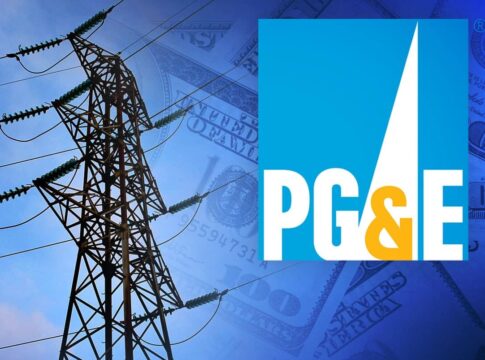PG&E Net Zero Emissions Pledge by 2040, Reveals “Scope 4” Emissions
The U.S.’s largest utility, Pacific Gas and Electric (PG&E), revealed its multi-decade pledge that aims to rapidly reduce its GHG emissions and reach net zero by 2040 while still using natural gas to produce power.
PG&E net zero pledge is five years earlier than the goal of its home state of California.
The utility’s climate strategy also calls for more ambitious interim 2030 goals and long-term targets. At a glance, here’s how the company commits itself to heal the planet:
A climate- and nature-positive energy system by 2050
A net zero energy system in 2040
A series of 2030 climate goals to reduce PG&E’s operational carbon footprint and enable customers and communities to reduce their carbon footprints:
Reduce Scope 1 and 2 emissions by 50% from 2015 levels
Reduce Scope 3 emissions by 25% from 2015 levels
Achieve “Scope 4” goals to enable customer emission reductions
PG&E Net Zero Pledge: 2030 Climate Goals
“Scope 4” emissions is an emerging term for categorizing emission reduction enabled by the company.
PG&E Climate Strategy and Carbon Credits
This permit to pollute says that when firms went over their allowed (cap) emissions, they’ll pay a fee for every metric ton of carbon above what they’re allowed to emit.
2040 and 2050: Net Zero Emissions and Climate-Positive Energy Future
Building upon its 2030 climate goals, PG&E will work to achieve net zero emissions by 2040 by eliminating or reducing emissions and then removing the remaining carbon from the air. By 2050, the utility firm plans to remove more GHG than it emits.
PG&E is uniquely positioned to lead the energy transition with customers at the center as being a dual commodity utility provider. To make this happen, the company will use a diverse mix of resources:
Broad electrification
Cleaner fuels ex. renewable natural gas and hydrogen
Nature-based solutions
Carbon capture, storage, and utilization
With this, PG&E aims to evolve the gas system to be an affordable, safe, and reliable net zero energy delivery platform.
Last year the utility got about 50% of its electricity from renewable sources like solar and wind. Another 39% came from the Diablo Canyon Nuclear Power Plant, which is set to shut down in 2025.
To make up for that lost power, the utility is investing in more battery storage so it can save excess solar power produced during the day for use at night.
PG&E CEO, Patti Poppe said about the utility’s net zero pledge in its climate strategy report:
“At first glance, meeting these milestones may look to be an extraordinary challenge. But extraordinary times call for extraordinary measures… We need to put the climate machine into reverse and begin undoing the damage. This [climate] report represents PG&E’s bold plan to do just.”
The post PG&E Net Zero Emissions Pledge by 2040, Reveals “Scope 4” Emissions appeared first on Carbon Credits.


